
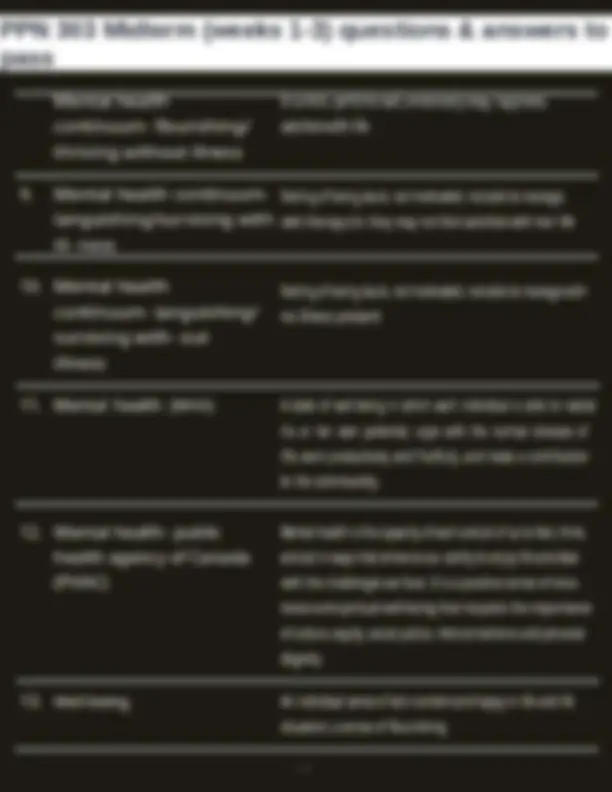

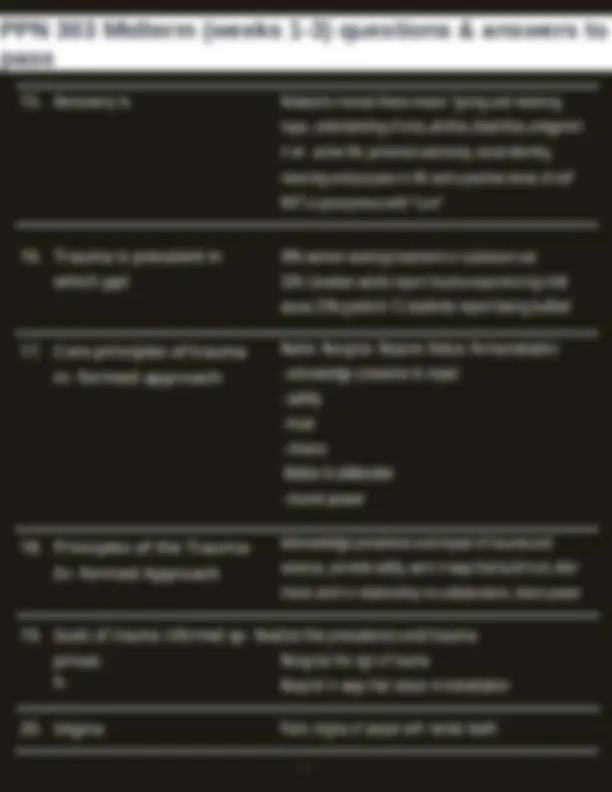

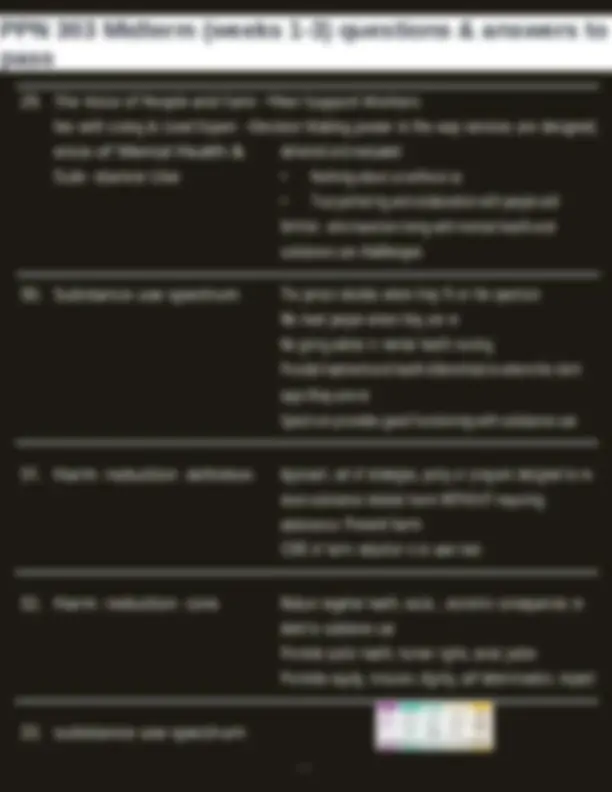

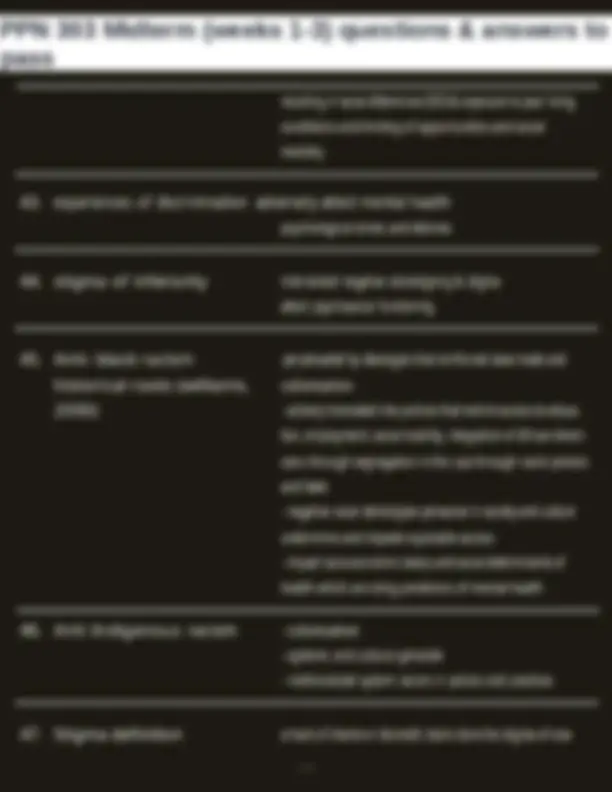
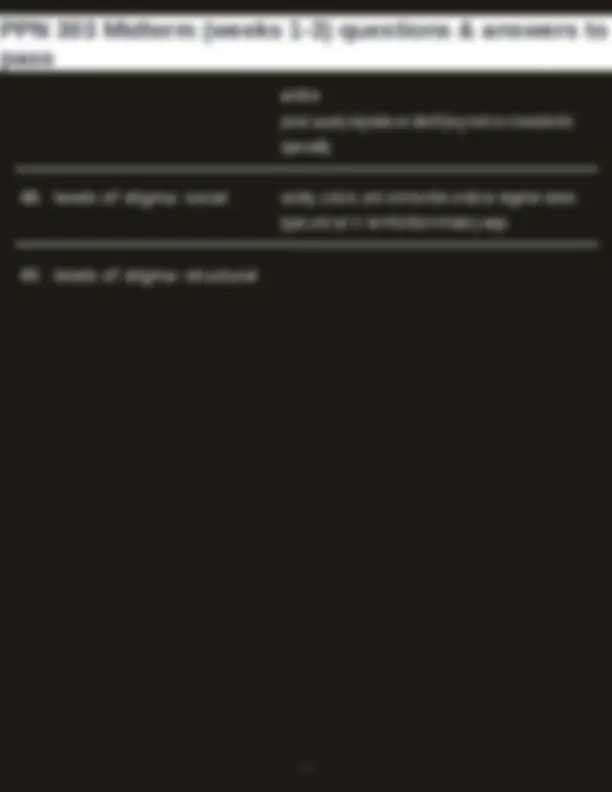
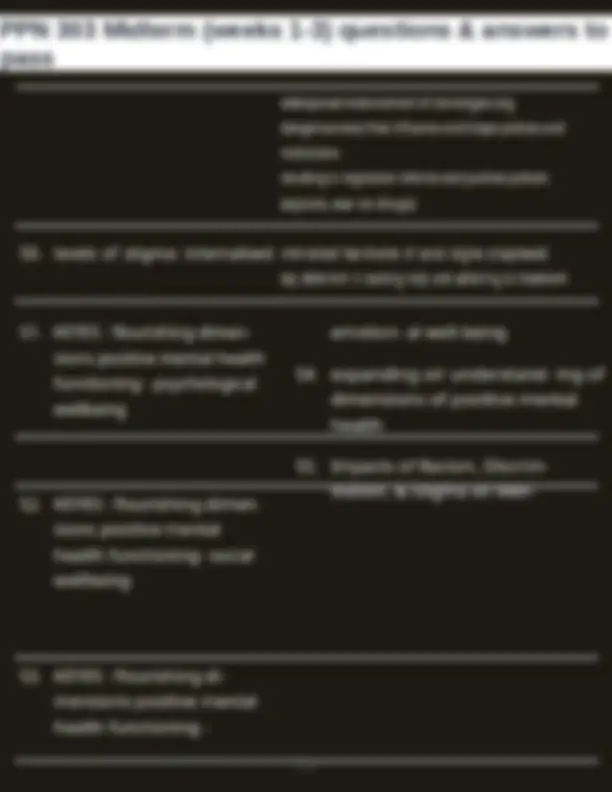
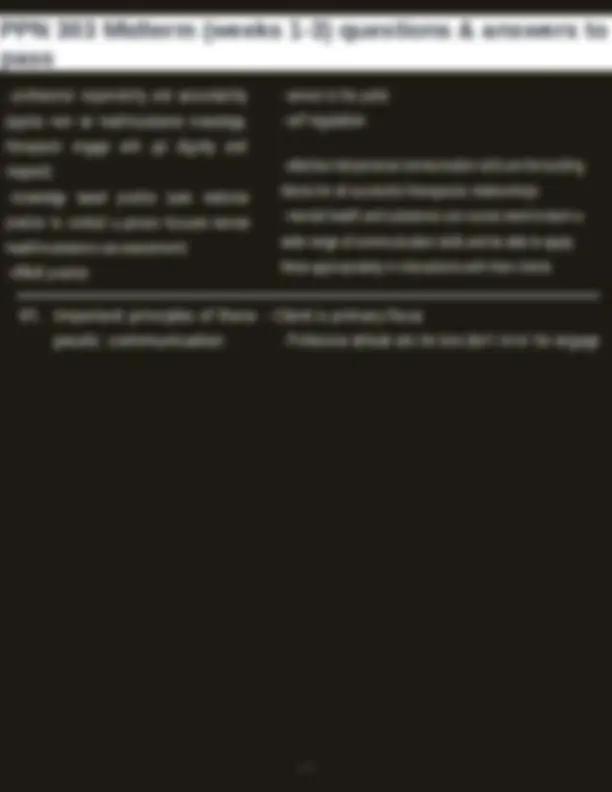
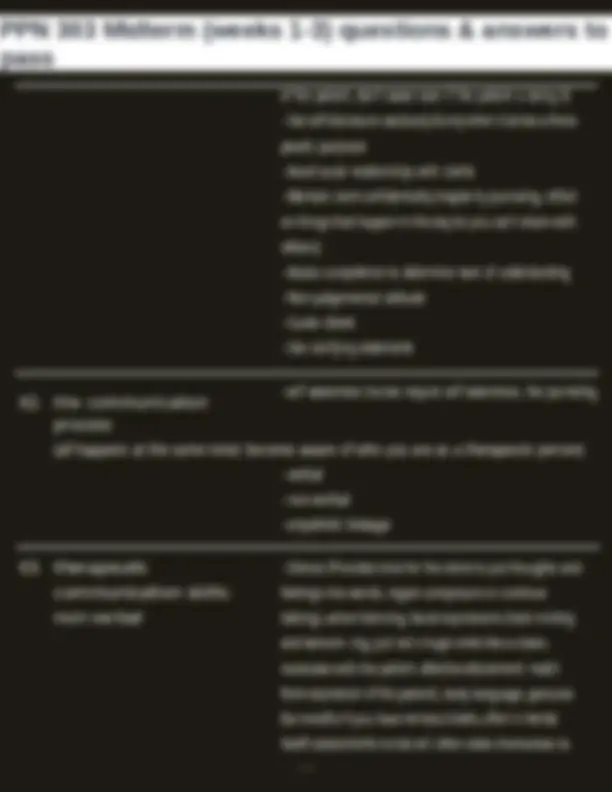



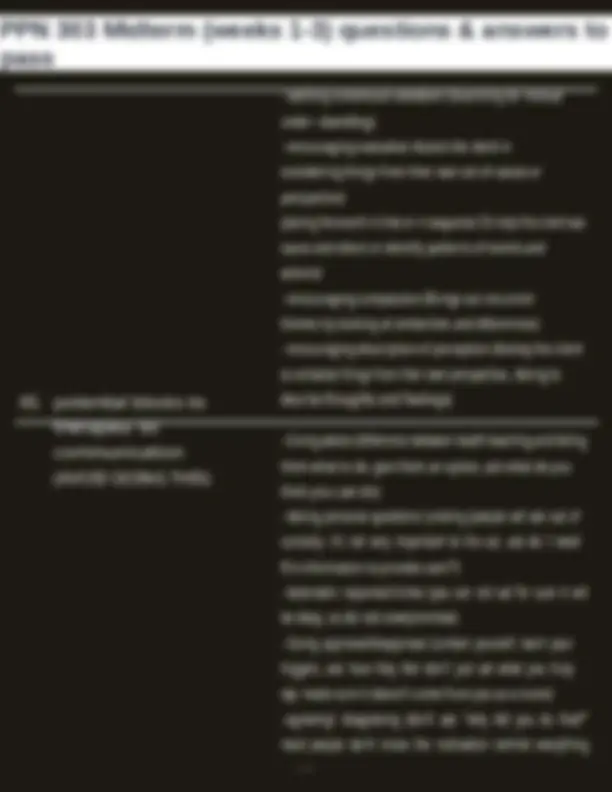

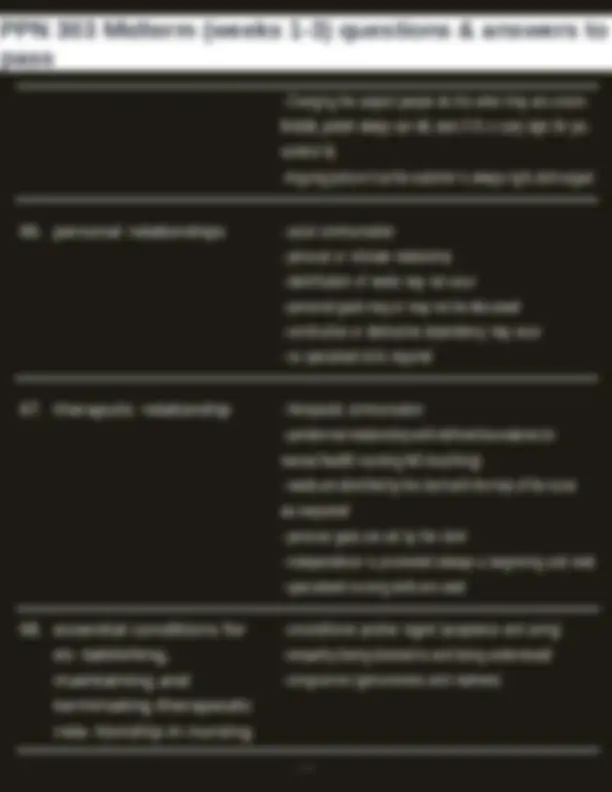
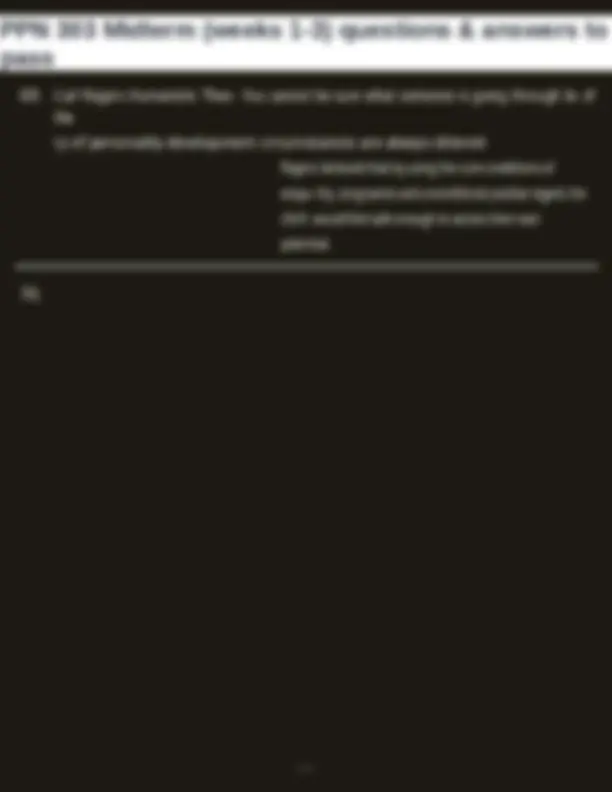
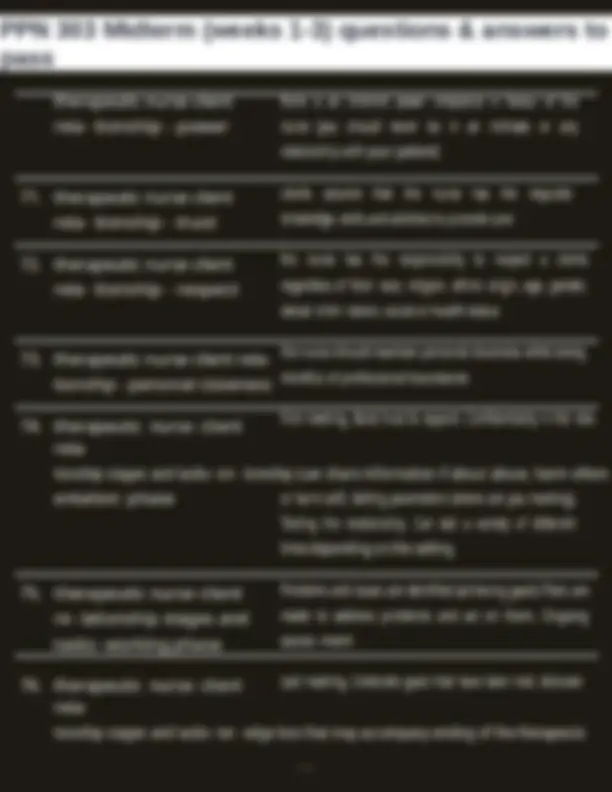
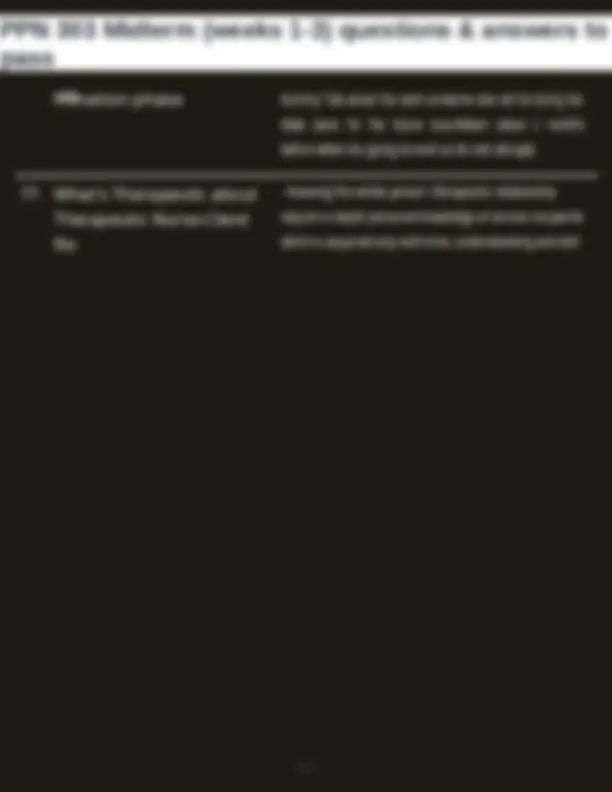
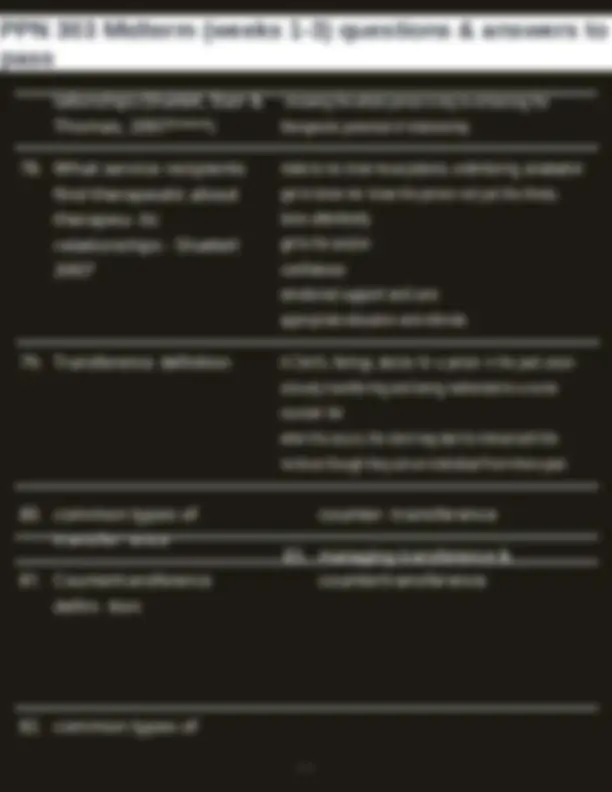

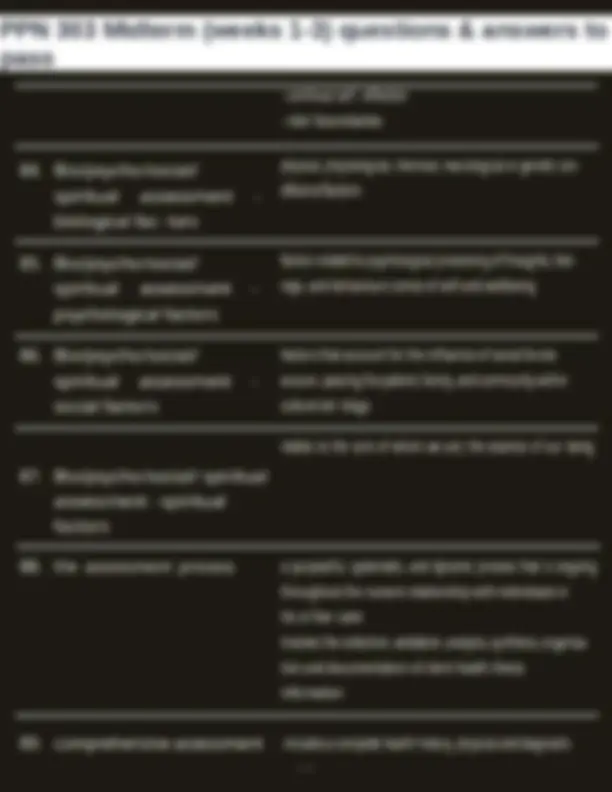
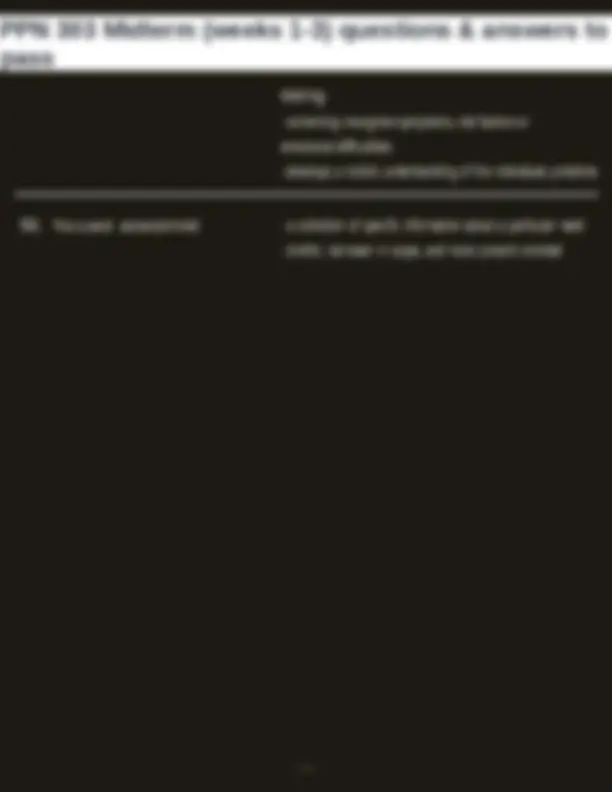
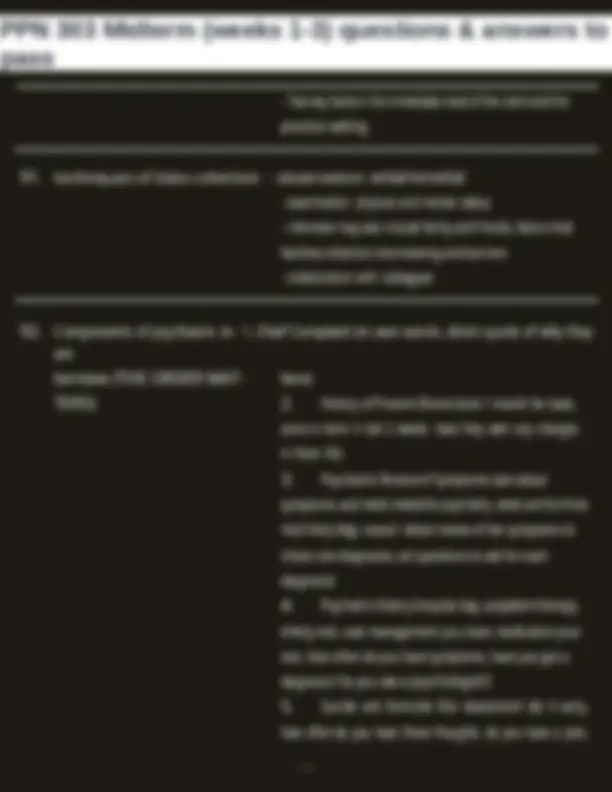

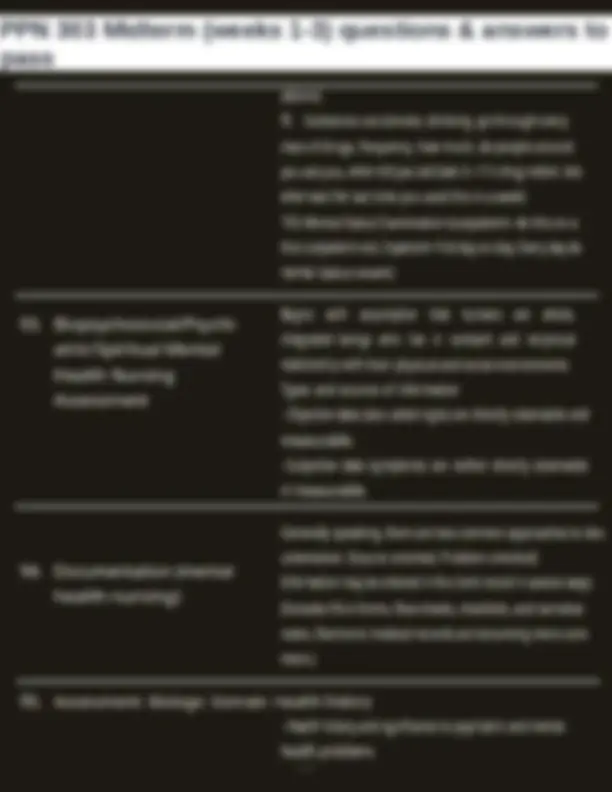

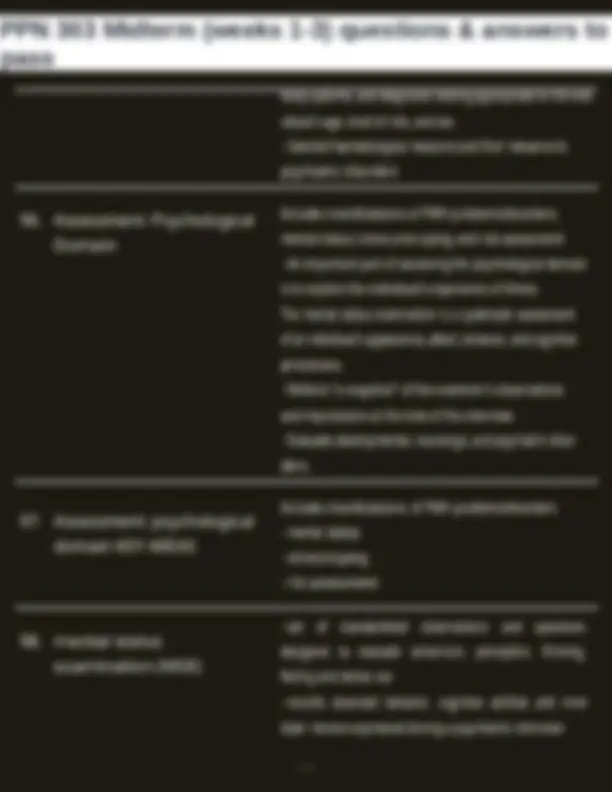

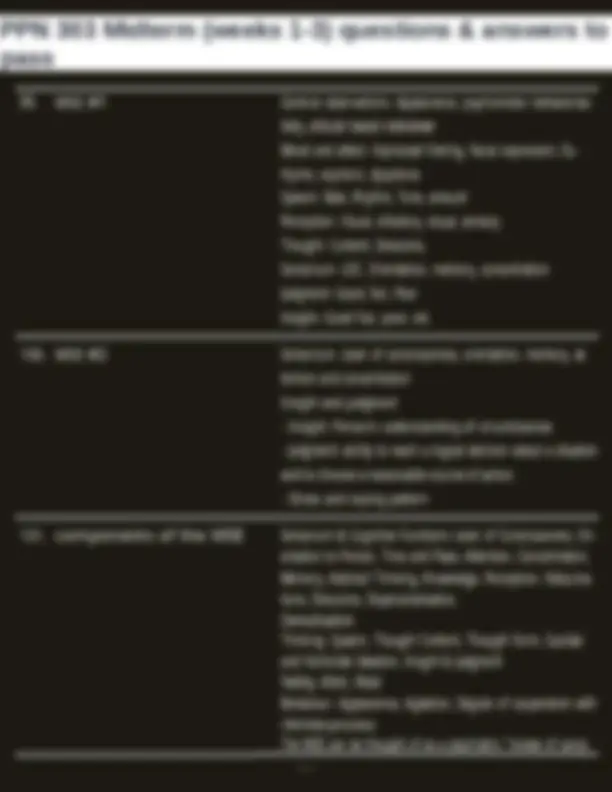

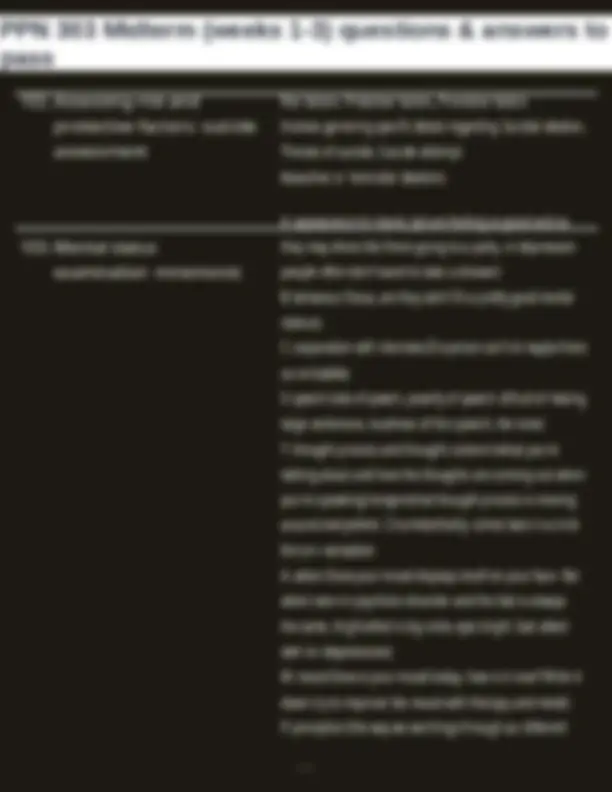

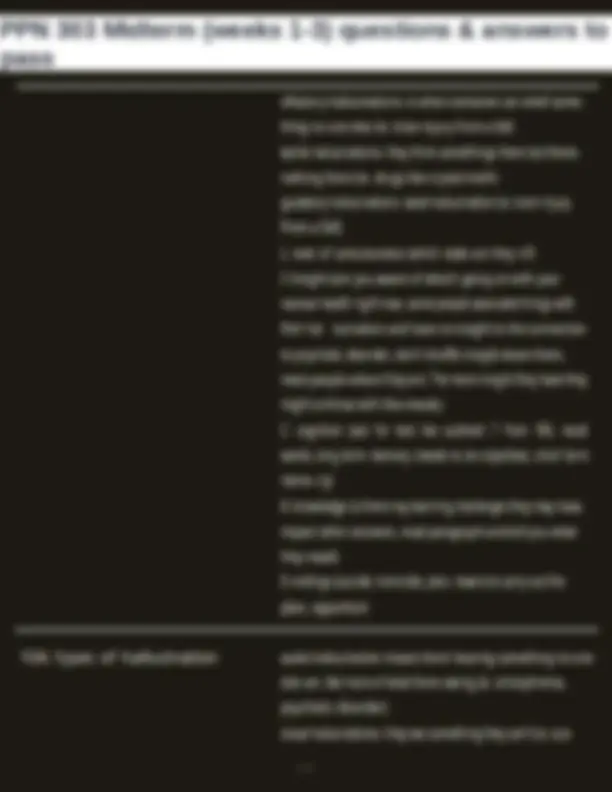

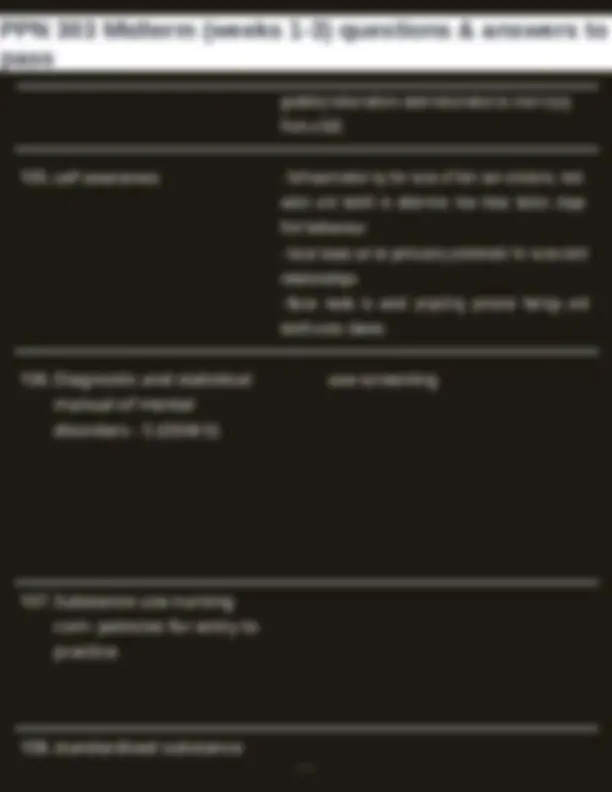
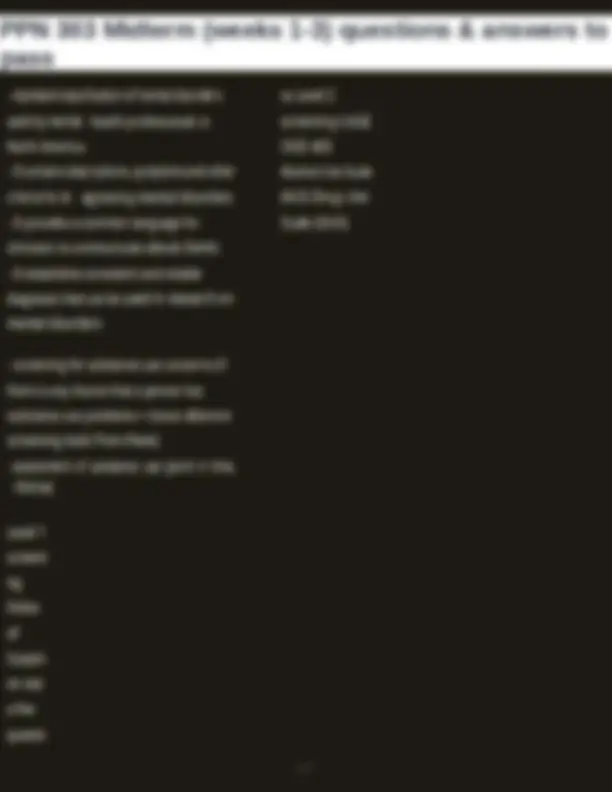
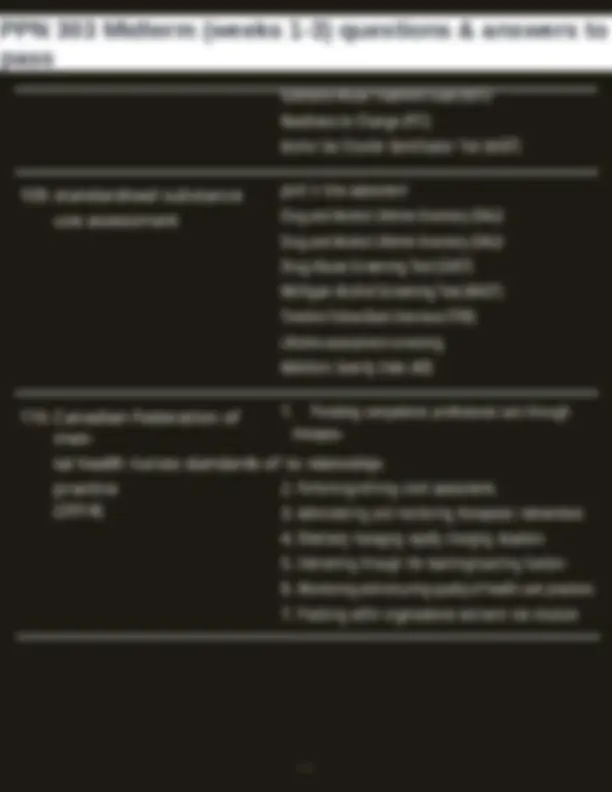


Study with the several resources on Docsity

Earn points by helping other students or get them with a premium plan


Prepare for your exams
Study with the several resources on Docsity

Earn points to download
Earn points by helping other students or get them with a premium plan
Community
Ask the community for help and clear up your study doubts
Discover the best universities in your country according to Docsity users
Free resources
Download our free guides on studying techniques, anxiety management strategies, and thesis advice from Docsity tutors
PPN 303 Midterm (weeks 1-3) questions & answers to pass -40.docx
Typology: Exams
1 / 47

This page cannot be seen from the preview
Don't miss anything!








































ill- ness/substance abuse 1 in 5 canadines experience mental illness People with mental illness are twice as likely to have substance use disorder People with substance use disorder are up to 3 times more likely to have mental illness
self-potential, cope with life stressors, and are able to work productively and contribute to their society. Is integral to gen- eral health and can be possessed and enhanced, including in presence of mental illness
"Flourishing" (KEYES) Subjective sense of wellbeing:
Emotional well-being Social well-being
NOT the opposite of mental health
continuum - flourishing/thriving with ill- ness can have great mental health with illness, learn to be resil- llience, ask for help, self manage, doesn't hid from their feel- ings
factors that include mood and attect, behaviour and thinking and condition The disorders are associated with various degrees of distress and impaired functioning
hope, understanding of ones, abilities, disabilities, endgame t in an active life, personal autonomy, social identity, meaning and purpose in life and a positive sense of self NOT a synonymous with "cure"
which ppl
in- formed approach
In- formed Approach 90% women seeking treatment or substance use 32% Canadian adults report trauma experiencing child abuse 25% grade 6-12 students report being bullied Realize. Recognize. Respond. Reduce. Re-traumatization
Relation & collaborative
Acknowledge prevalence and impact of trauma and violence, promote safety, work in ways that build trust, otter choice, work in relationship no collaboration, share power
proac h Recognize the sign of trauma Respond in ways that reduce re-tramatization
First Nations mental wellness continuum
wellness continuum... Mental wellness is a balance of mental, physical, spiritual, emotional balance enriched as individuals have; PURPOSE in their daily lives HOPE for their future and those of their families that is ground- ed in sense if identity, unique indigenous values and having belief in spirt Sense of BELONGING and connectedness with family, to com- munity and culture Sense of MEANING and an understanding of how their lives and those families and communities are part of creation and a rich history Help ppl build connections so they are not alone Look at indigenous way of health; HOPE, MEANING, PURPOSE, SENSE OF BELONGING will help people move away from self harm
liefs, practices and cultural values of diverse populations Develops skill in providing care that is culturally sensitive
and how that may interface when interacting with people Appreciates intersectionality and dynamic nature of people's identity
Goal is greater equity and addressing "root causes of power imbalances and inequities social relationships in healthcare
tural competence
vasive and has adverse health ettects on tacilzed and ethnic minority groups
mental health
(2000) definition
feriority
atti- tudes & beliefs
differential treatment
affects mental health there are persistent health disparities amoing raclized groups espaically Black and Indigenous peoples in Canada with deep correlations with socio economic status and ditterential access to health care conceptualises the term "racism" to refer to an "organised sys- tem that leads to the subjugation of some human population groups relative to others" human population groups are categorised & ranked relative to others development of negative attitudes and beliefs toward racial out groups (prejudice) incorporated in societal policies and institutions ditterential treatment of members of the outgroups by individ- uals and instiutions
ward in career) people will begin to believe this discrimination and will start to isolate themselves
resulting in racial ditterences (SES) & exposure to poor living conditions and limiting of opportunities and social mobility
psychological stress and distress
attect psychosocial functioning
historical roots (williams,
-perpetuated by ideologies that reinforced slave trade and colonisation
tion, employment, social mobility, integration of African Ameri- cans through segregation in the usa through racist polices and laws
undermine and impede equitable access
health which are sting predictors of mental health
ardice plural usually stigmata: an identifying mark or characteristic specially
types and act in harmful/discriminatory ways
negative attect
tal Health and Substance Use Services
approach perspectives
-trauma of racism, discrimination & stigma
WANT: what has happened to the person?
private practice, corporate setting
prac- tice mental health and addic- tion competencies for under- grad nursing education
communication skills
process of the patient, don't swear even if the patient is doing it)
peutic purpose
on things that happen in the day bc you can't share with others)
(all happens at the same time) become aware of who you are as a therapeutic person)
communication skills: non verbal
feelings into words, regain composure or continue talking), active listening, facial expressions (look inviting and welcom- ing, just not s huge smile like a clown, modulate with the patient- attective attunement- match there expression of the patient), body language, gestures (be mindful if you have nervous tickets, often in mental health assessments nurses will often video themselves to
see to make sure your mannerism is open), learning forward (sit on an angle, don't sit right next to each other bc if one wants to leave they can) 90% of your message is non-verbal Learn to sit in long periods of time in silence with active listen- ing